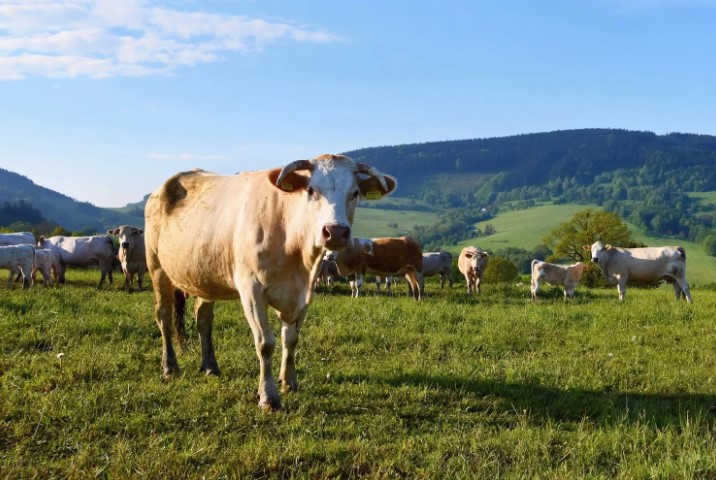
Key Takeaways
- Insight into fundamental ranch insurance coverages
- The importance of having a tailored liability protection plan
- Best practices for disaster preparedness and employee safety
- Tips for managing insurance costs and customizing policies
- Keeping up with future trends in ranch insurance
Table of Contents
- The Basics of Ranch Insurance
- Property Insurance: Safeguarding Your Investments
- Ranch Operations and Liability Coverage
- Worker Compensation and Employee Safety
- Disaster Readiness: Preparing Your Ranch for the Unexpected
- Financial Considerations and Insurance Costs
- Customizing Your Insurance: Endorsements and Riders
- Claims Processing and Support
- Insurance for Agritourism and Diversified Ranch Activities
- Future of Ranch Insurance: Trends and Innovations
The Basics of Ranch Insurance
Managing a ranch involves many responsibilities, and one of the most critical is ensuring comprehensive insurance coverage. Securing a well-structured ranch insurance plan is not merely about fulfilling a regulatory requirement but about protecting the assets that define your life’s work. A deep understanding of the fundamental coverage options is imperative to creating a robust and reliable safety net. This includes identifying risks unique to your ranch and aligning them with the appropriate insurance products. Ranch insurance policies vary significantly from one provider to another, and what works for a neighboring ranch might not suit yours. Fundamental considerations should include coverage for property damage, loss of livestock, equipment failure, and potential legal liabilities. Whether you manage a small family-owned operation or a large commercial enterprise, liability protection is the backbone for financial security, protecting you against claims that could threaten your ranch’s future.
Property Insurance: Safeguarding Your Investments
Property insurance protects your ranch’s physical assets, including your home, barns, outbuildings, and fencing. Coverage can extend to structures damaged by fire, severe weather, vandalism, or other covered perils. Equally important is protecting the assets vital to your ranch’s operations. Livestock is typically a ranch’s most valuable commodity, and the right policy should offer comprehensive coverage for animals against mortality due to accidents, illness, or natural disasters. Every ranch also depends on various equipment, from tractors and harvesters to specialized machinery, all needing protection. Equipment breakdown coverage is essential to property insurance, ensuring that damages or losses do not cause a halt in day-to-day operations or lead to financial strain. When considering what your policy includes, look at the clear-cut cases of coverage and less obvious exclusions that could leave you vulnerable. It’s advisable to discuss with your insurer any endorsements that could enhance your coverage based on the specific risks your ranch faces.
Ranch Operations and Liability Coverage
Ranching is more than just a business; it’s a livelihood that opens up multiple avenues for liability risks, including accidents involving visitors or trespassers, environmental damage claims, or incidents arising from day-to-day farm operations. A dedicated ranch operations and liability coverage plan can protect against such claims, giving ranch owners peace of mind and allowing them to focus on running their businesses. Liability coverage is not one-size-fits-all. It should be as unique as the ranch, tailored to the activities and services provided. For instance, if your ranch offers horseback riding lessons or operates as an event venue, your liability risks increase, necessitating specialized coverage options. By having a policy that covers these added risks, you ensure that both your assets and your reputation remain secure.
Worker Compensation and Employee Safety
The well-being of those who work on your ranch is as critical as the health of your livestock or the condition of your land. This makes worker compensation insurance an integral piece of the insurance puzzle, helping to mitigate the financial impact of work-related injuries or illnesses. While the law often requires this protection, fostering a safety culture can reduce premiums and, more importantly, a healthier and more productive workforce. Ranch work can be hazardous, and employees face risks daily. Nonetheless, ranch owners can demonstrate their commitment to employee welfare by providing adequate coverage and promoting a safe workplace through regular training, safety protocols, and proper equipment. Such measures boost morale and safeguard the operation from potentially devastating claims.
Disaster Readiness: Preparing Your Ranch for the Unexpected
As stewards of the land, ranchers know that nature can be both a friend and a foe. Natural disasters, whether sudden or anticipated, can wipe out years of hard work in an instant. Proper insurance coverage is your first line of defense, ensuring financial aid when needed most. Policies can be designed to cover losses from various events, such as drought, floods, tornadoes, or wildfires, each with its own particular set of challenges and necessary precautions. However, having insurance is just part of the solution; preparedness is equally important. Creating a disaster response plan that outlines clear actions for safeguarding lives and property before, during, and after such events can significantly reduce the impact. Guiding resources like those provided by government agencies, exemplified in tips on preparing your farm or ranch for a natural disaster, can be invaluable.
Financial Considerations and Insurance Costs
Insurance is a financial investment into the future security of your ranch. It’s essential to understand how insurance costs are calculated, including premiums, deductibles, and the overall limits of coverage. With this knowledge, ranch owners can effectively weigh their insurance’s cost against its benefits. Regularly reviewing and adjusting their policies can keep costs in check and ensure they are not over or underinsured. There are often ways to reduce premiums without sacrificing coverage. Implementing safety measures, bundling policies, and maintaining a claim-free record are just a few steps that can lead to lower insurance costs. Staying
informed about industry trends and negotiating with insurance providers, critical strategies for managing expenses.
Customizing Your Insurance: Endorsements and Riders
Ranch insurance should not be static; it must be dynamic and flexible, adapting to the ranch and industry changes. Endorsements and riders can serve to modify the basic policy, addressing gaps in coverage or providing additional protection for specific assets or scenarios. For instance, if a ranch begins to breed specialty livestock or offers eco-tourism services, endorsements can be added to cover these new ventures. It’s wise to periodically assess your insurance portfolio and consult experts to determine if your current coverage aligns with your ranch’s risks and opportunities. As operations grow and diversify, the need for specialized endorsements also ensures that every facet of the ranch is adequately protected.
Claims Processing and Support
In times of loss or damage, the responsiveness and efficiency of your insurer’s claims process become critical. Familiarizing yourself with the procedure, documentation requirements, and support mechanisms well before incidents can alleviate stress and confusion when filing a claim. This proactive approach enables ranchers to confidently navigate the claims process and receive the compensation they need to recover and rebuild. Strong relationships with insurance providers translate into better communication and support. Such relationships are constructed over time and through positive interactions. When insurers understand the unique aspects of your ranch, they are better equipped to provide swift and fair claims resolution and ongoing support throughout the recovery process.
Insurance for Agritourism and Diversified Ranch Activities
Diversifying ranch activities, including agritourism, can be exciting, bringing new revenue streams and connecting the public to agricultural life. However, it also introduces novel risks that must be managed. Activities like hayrides, petting zoos, and seasonal festivals increase foot traffic and interactions, elevating the potential for accidents or incidents on your property. Insurance tailored to agritourism needs can safeguard ranch owners from the liabilities associated with these activities. It’s crucial to disclose all agritourism offerings to your insurer to ensure that none of these new pursuits expose you to unexpected risks. Comprehensive coverage ensures that your financial security remains intact even as your ranch evolves and expands its offerings.
Future of Ranch Insurance: Trends and Innovations
The agriculture industry is not immune to change, and ranch insurance must evolve alongside it to remain relevant and practical. Technological advancements like drone surveillance, precision farming, and automated equipment affect risk management and insurance needs. Ranchers who stay informed about these trends are better prepared to adapt their policies to cover emerging risks. Environmental concerns and sustainable practices are increasingly influencing the industry, potentially altering the types of coverage needed. Insurers are responding with new products and services that reflect these changing priorities. Understanding these shifts and anticipating the future needs of the ranching industry is crucial for maintaining comprehensive, adequate insurance protection.





